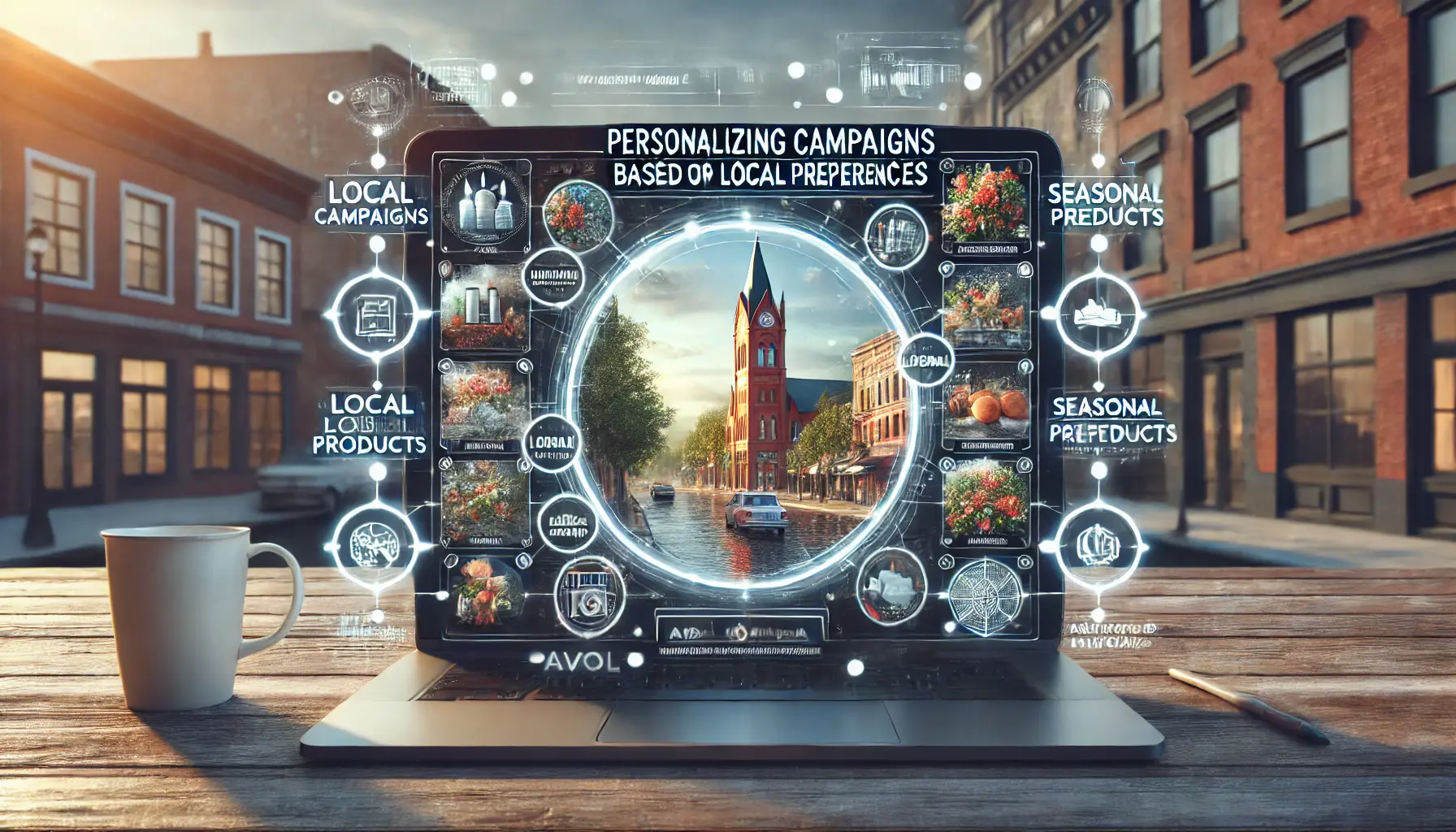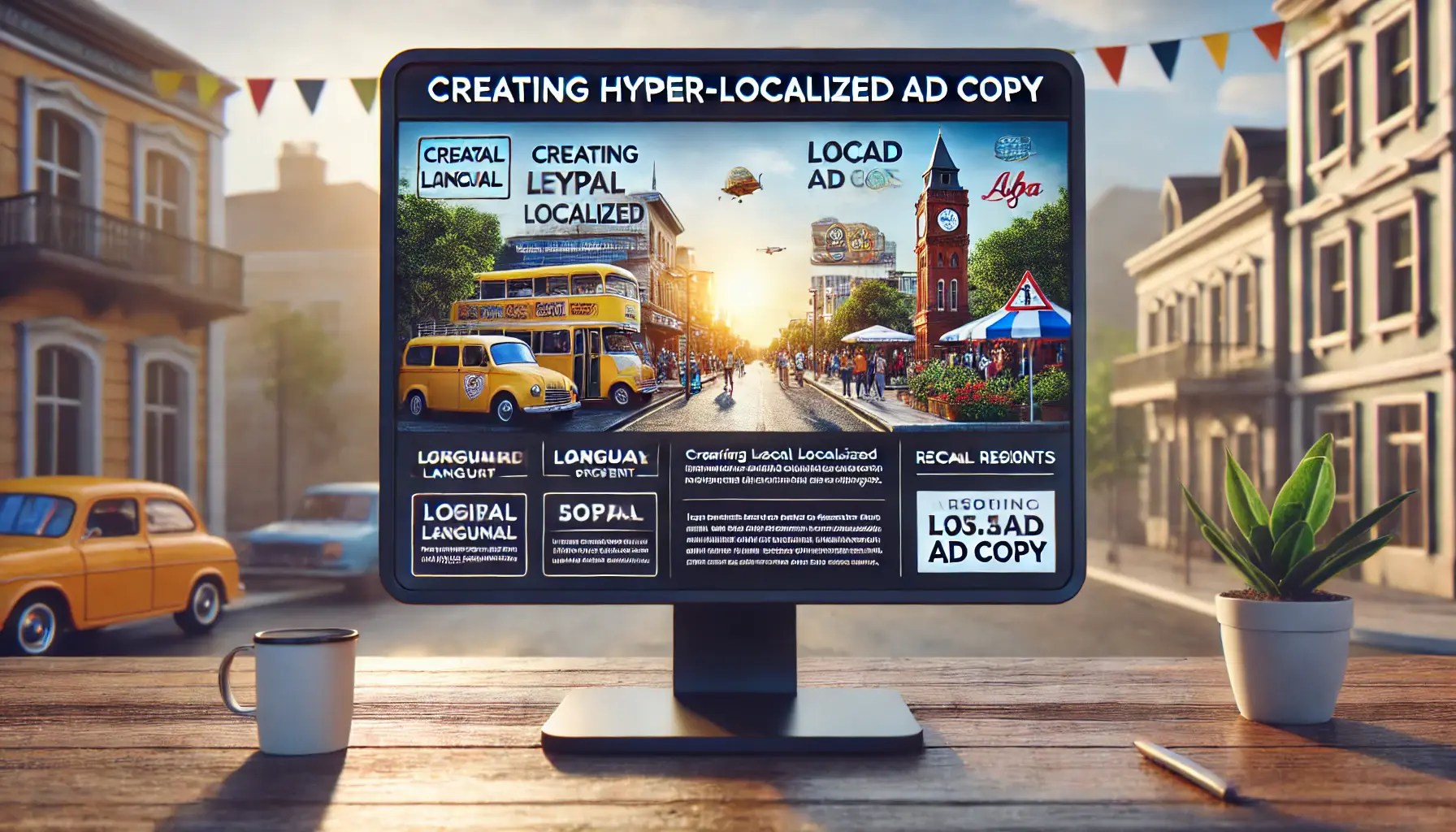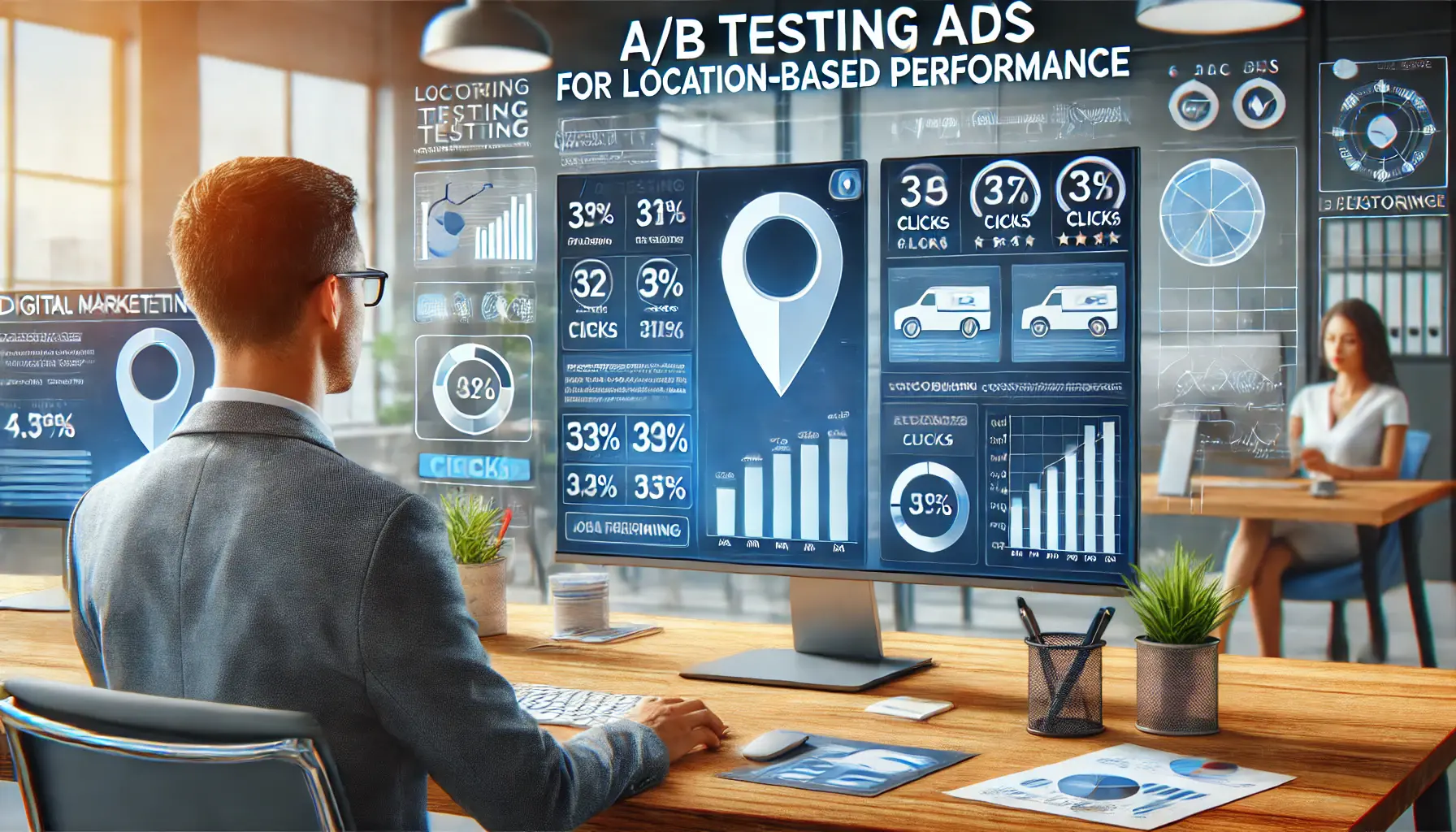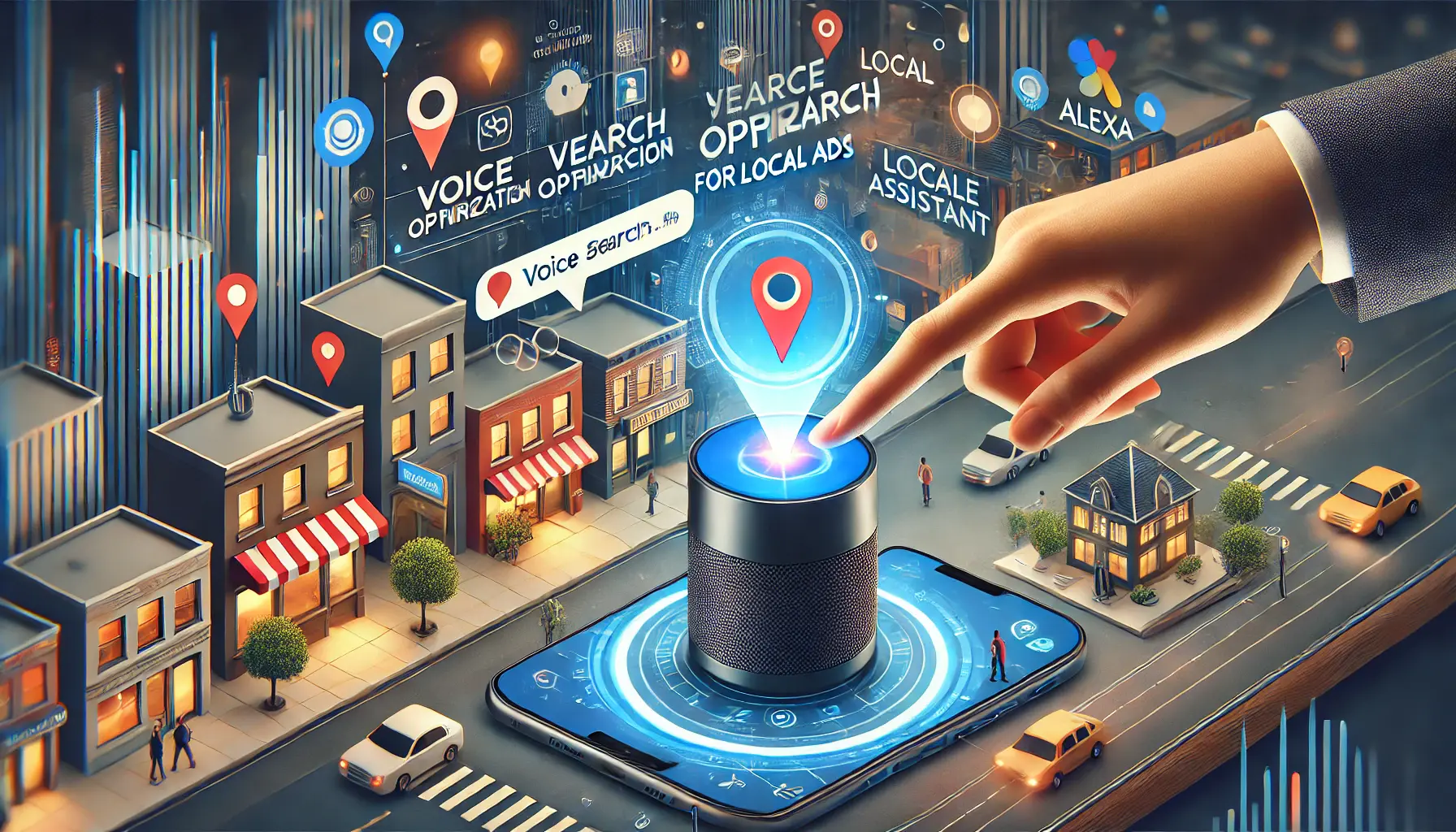In today’s digital era, effectively reaching your target audience has become crucial.
Location-based advertising has emerged as one of the strongest strategies that help businesses connect with people in specific geographic areas.
By leveraging the power of location, advertisers can create personalized campaigns that resonate with local audiences and drive higher engagement and conversions.
If you have ever wondered how to make your ads more relevant to your audience, mastering the art of location-based advertising is key.
Below, we’ll walk through five important ways to help you optimize your location-based ads and truly get the most out of your marketing efforts.
From understanding the fundamentals to implementing advanced targeting techniques, this article has everything you need to get started on the right foot.
- Understanding the Basics of Location-Based Advertising
- Techniques of Targeting for Location-Based Ads
- Optimizing Ad Content for Local Audiences
- Tracking and Measuring the Success of Location-Based Ads
- Emerging Trends in Location-Based Advertising
- Maximizing Success with Location-Based Advertising
- Location-Based Advertising: Frequently Asked Questions
Understanding the Basics of Location-Based Advertising
Before diving into advanced strategies, it’s crucial to understand the basics of location-based advertising.
At its core, location-based advertising uses geographic data to deliver ads to users based on their current or past locations.
This method allows businesses to tailor their marketing messages to specific areas, ensuring higher relevance and effectiveness.

Visual representation of location-based ads with a digital map and interactive location pins.
What Are Location-Based Ads?
Location-based ads are advertisements that target users based on their geographic location.
These ads utilize technologies like GPS, Wi-Fi, and cell tower data to pinpoint where users are and deliver content that aligns with their surroundings.
This approach ensures that your ads reach the right audience at the right time.

Illustration emphasizing the role of location in digital marketing through a connected cityscape with virtual markers.
Why Location Matters in Digital Marketing
Location plays a significant role in digital marketing because it helps businesses connect with their audience on a personal level.
Whether you’re promoting a local event or driving foot traffic to your store, knowing where your audience is located allows you to craft campaigns that feel relevant and timely.

Illustration of the key benefits of location-based advertising with a connected cityscape and analytics visuals.
Key Benefits of Location-Based Advertising
- Enhanced Relevance: Tailoring ads to a specific location makes them more appealing to the target audience.
- Higher Engagement: People are more likely to interact with ads that address their immediate needs or surroundings.
- Improved ROI: By focusing on a specific geographic area, businesses can allocate resources more effectively and see better returns.

Illustration of challenges in location-based strategies, featuring unclear GPS signals and privacy hurdles.
Challenges in Implementing Location-Based Strategies
While location-based advertising offers numerous benefits, it also comes with challenges.
Privacy concerns, data accuracy, and technical implementation can be barriers.
However, by understanding these challenges and addressing them proactively, you can create effective location-based campaigns that drive results.
Location-based advertising ensures businesses can reach their audience effectively by tailoring messages to specific geographic areas, driving better engagement and ROI.

Illustration of advanced targeting techniques for location-based ads, featuring geofences and radial zones.
Techniques of Targeting for Location-Based Ads
In location-based advertising, it’s all about picking the correct techniques for targeting.
With advancements in technology, advertisers now have access to a variety of tools and strategies to ensure their advertisements reach the right audience in the right location.
This section explores the most effective methods to maximize the impact of your location-based campaigns.

Illustration of geo-fencing technology targeting customers within a specific location area.
Using Geo-Fencing to Target Customers
Geo-fencing is one of the most powerful tools in location-based advertising.
It allows advertisers to create a virtual boundary around a specific geographic area.
When users enter this area, they receive targeted ads or notifications.
This technique is particularly effective for promoting events, local businesses, or special offers.
For instance, a coffee shop can use geo-fencingA virtual boundary created around a specific area, using GPS or RFID technology. to send a discount notification to potential customers walking within a 500-meter radius.
This approach increases the likelihood of driving foot traffic and immediate engagement.

Illustration of geo-conquesting targeting customers near a competitor’s location to gain a competitive advantage.
Leveraging Geo-Conquesting for Competitive Advantage
Geo-conquesting is a strategy that involves targeting customers near your competitors’ locations.
By doing so, you can attract their audience to your business.
For example, a restaurant might use geo-conquestingA strategy where businesses target customers near their competitors' locations. to advertise a “Buy One Get One Free” offer to individuals near a rival eatery.
This tactic helps businesses stand out in a crowded market and convert potential customers who are already in the buying mindset.

undefined
Personalizing Campaigns Based on Local Preferences
Understanding local culture and preferences is essential for creating campaigns that resonate with your audience.
Segment your ads using demographic and behavioral information.
Highlight local events, languages, or trends to increase relevance and effectiveness.
For instance, a clothing retailer could advertise seasonal, region-specific clothes during a local festival or holiday.
This personalization ensures your message aligns with the audience’s interests and needs.

Illustration of setting up radius targeting in Google Ads, featuring a digital map with a targeting radius around a business location.
Setting Up Radius Targeting in Google Ads
Google Ads provides radius targeting, which enables you to define a specific radius around a location to display your ads.
This feature is ideal for businesses that rely on customers nearby, such as gyms, salons, or retail stores.
To set up radius targeting, go to the Google Ads platform and select your campaign.
Choose the location settings and define the radius you want to target.
Combine this with ad scheduling to show ads during peak business hours for maximum efficiency.
- Tip 1: Let analytics determine your most profitable radius.
- Tip 2: Use the exclude overlapping areas feature when competition is too high in a specific location to optimize ad spend.
- Tip 3: Test different radius sizes and analyze performance to fine-tune your strategy.
With these targeting methods, you can ensure that your location-based ads effectively reach the right audience, drive engagement, and deliver measurable results.
Utilizing tools like geo-fencing and geo-conquesting can significantly improve the precision and impact of location-based campaigns, making them more effective in engaging the target audience.

undefined
Optimizing Ad Content for Local Audiences
Creating content that resonates with your audience is a cornerstone of successful location-based advertising.
When your ads speak directly to the needs and interests of a local audience, they are far more likely to capture attention, drive engagement, and lead to conversions.
This section explores strategies to optimize your ad content for local relevance and effectiveness.

undefined
Creating Hyper-Localized Ad Copy
Ad copy tailored to specific locations can significantly boost engagement.
Mention local landmarks, events, or community references in your text to make the ad feel personalized.
For instance, a bakery could advertise with “Freshly baked croissants near Central Park” to immediately capture the attention of locals.

Illustration of using local language and cultural nuances in advertisements, showing people interacting with devices in a community setting.
Using Local Language and Cultural Nuances
Language is a powerful tool in advertising.
Incorporating local dialects, slang, or culturally significant phrases can help your ads resonate more deeply.
Understanding and respecting cultural nuances ensures your message is relatable and avoids unintended misinterpretations.
For example, a campaign targeting a multilingual region might include ads in multiple languages to cater to diverse audience groups.

undefined
Integrating Location Keywords in Ad Text
Using location-specific keywords in your ad text helps improve its visibility and relevance.
These keywords can enhance search engine optimization (SEO) and make your ad appear more prominently in local search results.
For example, a fitness center could use phrases like “best gym in downtown Miami” or “affordable personal training near Brooklyn.”

Illustration of crafting localized visuals for advertising, with a designer editing a cityscape and cultural elements.
Crafting Visuals That Resonate Locally
Visuals are as important as text in location-based advertising.
Use images and videos that feature recognizable local landmarks, scenery, or events to create a connection with your audience.
For example, a tourism company could showcase photos of iconic spots within the target region to inspire local travel.

Illustration of A/B testing ads for location-based performance, showing two ad versions with performance metrics on a computer screen.
A/B Testing Ads for Location-Based Performance
Testing your ads is critical to understanding what works best for your local audience.
Create multiple versions of an ad with slight variations in copy, visuals, or offers, and measure their performance.
This allows you to identify and refine the most effective elements of your campaign.
- Tip 1: Test different headlines, emphasizing local benefits.
- Tip 2: Experiment with images featuring local landmarks versus generic visuals.
- Tip 3: Analyze click-through rates and conversion metrics to determine which version performs best.
By optimizing your ad content for local audiences, you’re not only driving more engagement but also nurturing a connection and trust with your target market.
This approach ensures that your location-based advertising campaigns drive measurable and meaningful results.
Personalized and hyper-localized ad copy resonates better with audiences, enhancing engagement and driving conversions effectively.

undefined
Tracking and Measuring the Success of Location-Based Ads
Success in location-based advertising isn’t just about launching campaigns; it’s about knowing how well they perform and understanding the return on investment (ROI).
Proper tracking and measurement allow you to fine-tune your strategies, allocate budgets effectively, and maximize results.
In this section, we explore the most efficient ways to track and measure the success of location-based ads.
Illustration of setting up conversion tracking for local ads, with conversion metrics displayed on a computer screen.
Setting Up Conversion Tracking for Local Ads
Conversion tracking is essential for measuring the effectiveness of your location-based ads.
Tools like Google Ads and Facebook Ads Manager offer options to track actions such as store visits, in-app purchases, and form submissions.
By setting up conversion tracking, you can monitor how well your ads are driving key objectives and refine them accordingly.
For example, a restaurant running a location-based campaign can track how many users clicked on their ad and made a reservation.
This data helps measure direct ROI and identify opportunities for optimization.

Illustration of analyzing foot traffic and store visits, with data and location-based metrics displayed on a computer screen.
Analyzing Foot Traffic and Store Visits
Tracking foot traffic and store visits is crucial for brick-and-mortar businesses.
Most platforms, including Google Ads, have location extensions and store visit conversion tracking that utilize GPS data and mobile location history to estimate how many users visited your store after clicking on your ad.
For this to pay off, make sure your business location details are accurate and updated on platforms like Google My Business.
This accuracy improves the reliability of the data and ensures that your campaigns target the right audience.

Illustration of using Google Analytics for geo-specific insights, featuring a map with location-based data and visitor metrics.
Using Google Analytics for Geo-Specific Insights
Google Analytics provides detailed geo-specific insights to help you understand your audience better.
You can track metrics like website visits, bounce rates, and conversions based on user location.
This data allows you to identify high-performing regions and adjust your campaigns to target these areas more effectively.
For example, if you notice high traffic from a specific city but low conversions, you might need to tweak your ad messaging or offer location-specific incentives.

Illustration of evaluating ROI for location-based campaigns, with performance metrics and location data displayed on a dashboard.
Evaluating ROI on Location-Based Campaigns
Understanding the ROI of your location-based campaigns involves analyzing all related costs and comparing them to the revenue generated.
Some tools, like Google Ads, have methods for calculating the cost per conversion and ROI for each campaign.
By focusing on the campaigns with the highest ROI, you can allocate your budget to the most effective strategies.
- Tip 1: Break down ROI by location to identify the most profitable regions.
- Tip 2: Use heat maps to visualize areas with the highest engagement.
- Tip 3: Monitor ad spend closely to ensure it aligns with campaign performance.
By implementing these tracking and measurement techniques, you can ensure that your location-based advertising campaigns are not only effective but also continuously improving.
This data-driven approach helps you make informed decisions and achieve long-term success.
Tracking metrics like conversions, ROI, and foot traffic helps businesses refine location-based campaigns and maximize performance.

Illustration of emerging trends in location-based advertising, featuring AR ads, AI-powered analytics, and smart connected devices.
Emerging Trends in Location-Based Advertising
Location-based advertising has constantly evolved due to advancing technology and changing consumer behaviors.
Businesses that stay abreast of emerging trends can maintain a competitive edge and capitalize on new opportunities.
This section explores the most exciting and impactful trends shaping the future of location-based advertising.

Illustration of AI-powered location targeting, with a map interface showing dynamic location markers and AI data streams.
The Role of AI in Location Targeting
Artificial intelligence (AIArtificial Intelligence, which enables machines to simulate human intelligence for tasks like data analysis.) is revolutionizing location-based advertising by enabling smarter and more precise targeting.
AI algorithms analyze vast amounts of data, including user behavior, location patterns, and preferences, to deliver highly personalized ads.
This technology allows advertisers to predict consumer needs and serve ads at the perfect time and place.
For example, an AI-powered campaign might identify that a user frequently visits coffee shops in the morning and deliver an ad for a nearby café offering a breakfast discount.

Illustration of augmented reality (AR) technology for localized engagement, with a person using AR to explore nearby locations.
Augmented Reality (AR) for Localized Engagement
Augmented reality (ARAugmented Reality, a technology that overlays digital content onto the real world.) is becoming a powerful tool for engaging local audiences.
Businesses are using AR to create more interactive and immersive experiences that drive customer engagement.
For instance, retailers can use AR to showcase how furniture looks in a specific space or how a product fits into a customer’s lifestyle.
In location-based advertising, AR can also guide users to physical store locations with virtual directions or provide information about nearby attractions and deals.

undefined
Voice Search Optimization for Local Ads
Voice search is gaining popularity, with many users relying on virtual assistants like Siri, Alexa, and Google Assistant to find local businesses and services.
Optimizing your location-based ads for voice search involves using natural language keywords and phrases that match how users speak when searching.
For example, instead of “best pizza downtown,” a voice-optimized ad might target “Where can I get the best pizza near me?” This strategy ensures your ads are visible to users who prefer voice search over traditional text-based queries.

undefined
Privacy Concerns and Compliance in Location Advertising
As location-based advertising becomes more sophisticated, concerns about user privacy and data security are also increasing.
Governments and regulatory bodies around the world have begun imposing stricter data protection laws, such as GDPRGeneral Data Protection Regulation, a European Union law on data protection and privacy. and CCPACalifornia Consumer Privacy Act, a law to enhance privacy rights for residents of California., which impact how advertisers collect and use location data.
To ensure compliance, businesses must adopt transparent data practices, obtain user consent, and prioritize data anonymization.
Building trust with your audience through ethical advertising practices can lead to long-term success.

Illustration of future technologies shaping location-based marketing, featuring smart devices, connected cars, and wearable tech in a city.
Future Technologies Shaping Location-Based Marketing
Emerging technologies such as 5G and the Internet of Things (IoTInternet of Things, a network of interconnected devices that communicate and share data.) are set to transform location-based advertising.
Faster connectivity through 5G allows for real-time ad delivery with minimal latency, enhancing the effectiveness of time-sensitive campaigns.
IoT devices, like smartwatches and connected cars, offer new ways for advertisers to reach users with messages relevant to their location and activity.
For example, an in-car device could display ads for nearby fuel stations when it detects that the car’s fuel level is low.
This would provide a seamless and relevant experience for the user.
By embracing these emerging trends and technologies, businesses can stay ahead in the evolving world of location-based advertising, ensuring their campaigns remain innovative, effective, and compliant with industry standards.
Future trends like AI, AR, and voice search are reshaping the landscape of location-based advertising, offering smarter and more innovative approaches.

Illustration of maximizing success with location-based advertising, showing data metrics and high-performance areas on a map.
Maximizing Success with Location-Based Advertising
Location-based advertising is an energetic and evolving strategy that enables businesses to connect with audiences in highly targeted ways.
By applying geographic data in innovative ways, location-based advertising helps advertisers drive effective campaigns, improve engagement, and increase conversions.
This article has covered five key areas to help you optimize your efforts and achieve measurable success.

undefined
The Power of Understanding Location-Based Advertising
Success starts with a solid foundation.
Understanding the fundamentals of location-based advertising, from using geographic data effectively to tailoring campaigns for specific areas, is essential for maximizing impact.
By focusing on the needs and behaviors of local audiences, businesses can create ads that resonate on a personal level.

Illustration of targeting strategies that drive results, showing a map with different targeting zones and performance metrics.
Targeting Strategies That Drive Results
Using advanced targeting techniques like geo-fencing and geo-conquesting can significantly enhance the reach and effectiveness of location-based ads.
Personalizing campaigns based on local preferences and leveraging tools like radius targeting in Google Ads ensure your message reaches the right audience at the right time.

Illustration of creating content that resonates with local audiences, showing a marketing professional integrating local visuals into an ad.
Creating Content That Captures Local Audiences
Optimizing ad content for local relevance involves crafting hyper-localized copy, incorporating cultural nuances, and using location-specific keywords.
Visuals that resonate with the target region and A/B testing can further refine your campaigns, ensuring maximum engagement and performance.

undefined
Measuring Performance to Refine Campaigns
Tracking and analyzing the success of location-based ads is vital for continuous improvement.
Conversion tracking, foot traffic analysis, and tools like Google Analytics help businesses understand ROI and make data-driven decisions.
By focusing on performance metrics, advertisers can allocate resources effectively and maximize their impact.

Illustration of staying ahead with emerging trends, showing a marketer using AR, AI, and data visualization in a modern office.
Staying Ahead with Emerging Trends
The future of location-based advertising lies in embracing emerging technologies like AI, augmented reality, and voice search optimization.
Adopting transparent and ethical practices in response to privacy concerns builds trust with audiences, while innovations such as 5G and IoT open new possibilities for real-time, context-aware advertising.

Illustration of final thoughts in digital marketing, showing a professional contemplating campaign performance and future strategies.
Final Thoughts
Location-based advertising offers unparalleled opportunities to connect with audiences in meaningful ways.
By understanding its fundamentals, employing advanced targeting techniques, crafting locally relevant content, and staying informed about emerging trends, businesses can create campaigns that deliver exceptional results.
Integrating these strategies ensures that your location-based advertising efforts are not only effective but also sustainable in a rapidly changing landscape.
Combining geographic insights with advanced tools and ethical practices ensures long-term success in location-based advertising strategies.

Illustration of location-based advertising FAQs, showing a digital marketing professional analyzing a map with queries and location targets.
Your campaigns can be managed by an agency specialized in Google Ads, check out our service page.
Location-Based Advertising: Frequently Asked Questions
Following are some of the most frequently asked questions about location-based advertising, its strategies, and how businesses can use it effectively to drive better engagement and conversions.
Location-based advertising is a strategy that uses geographic data to target specific audiences.
It enables businesses to deliver ads tailored to users’ current or past locations, increasing relevance and effectiveness.
Geo-fencing uses GPS or RFID technology to create a virtual boundary around a location.
When users enter this boundary, they receive targeted ads or notifications tailored to their location.
Local relevance ensures ads resonate with specific audiences by addressing their unique needs, preferences, or cultural nuances.
This increases engagement and improves the likelihood of conversions.
Businesses can measure ad performance through tools like Google Analytics, conversion tracking, and foot traffic analysis.
These tools provide insights into metrics like ROI, click-through rates, and store visits.
Privacy concerns in location-based ads include unauthorized data collection and misuse.
Advertisers must comply with regulations like GDPR and CCPA by obtaining user consent and using data responsibly.
AI enhances location-based advertising by analyzing user data and patterns.
It helps deliver highly personalized ads at the right time, boosting engagement and conversions.
Voice search impacts location-based ads by requiring natural language keywords.
Optimizing for voice ensures visibility for users searching through virtual assistants like Siri or Alexa.
Industries like retail, hospitality, food services, and tourism benefit most from location-based ads.
These sectors rely on local customers and can drive foot traffic effectively with targeted campaigns.
Augmented reality enhances location-based ads by offering interactive and immersive experiences.
AR can guide users to stores, showcase products in real settings, or highlight local deals and attractions.













